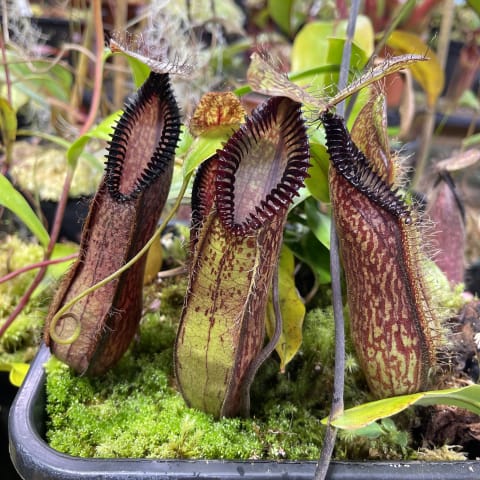
Our editors have independently chosen the products listed on this page. If you purchase something mentioned in this article, we may earn a small commission.
August 5, 2021 — 11:02 AM
During a recent houseplant watering session, I noticed something on my Monstera that made me stop mid-pour. It was a root unlike any I’d seen before: thick, dark in color, and most perplexingly, aboveground. Was it normal? Was it a sign that the plant needed a new pot? Was I failing so miserably at plant care that my Monstera was going rogue on me?
Clueless, I called up someone with a thumb greener than mine: Erin Marino, the editorial lead at NYC-based shop The Sill and expert on all things plant care, assured me that the root was nothing to worry about. In fact, while aerial roots are most prominent on Monsteras, they actually grow naturally on lots of other plants including pothos, philodendrons, and orchids. Here’s what to know about this funky little growth structure.
“Aerial roots are on epiphytic plants, so plants that can grow in soil but can also grow on rocks, up trees, or on any other formations that are out in their native habitat,” Marino told me.
That would explain why my Monstera—a plant that climbs tropical trees in its native habitat—was starting to grow them. Marino added that in addition to helping plants climb toward life-giving sunlight, these aerial roots also provide the plant with an extra energy source. “These roots are helping the plant absorb more nutrients in its natural habitat,” she explained, by sucking up nutrients and moisture that’s blown around in the wind.
Distinguishing between these roots and underground roots that are peeking above the surface (and are a sign your houseplant needs a larger pot) is pretty straightforward: Aerial roots tend to sit farther up on a plant stem, and they look thicker, more mature, and potentially darker than your typical roots. They may also pop up at the end of trailing vines, unlike overgrown ground roots that will just sit on the surface of the soil.
If you, too, are wondering what to do about these rogue roots, you’ve got options:
probiotic+
Tackle your gut issues now, so you don’t have to think about them later.*

Seeing as these roots are a totally natural part of an epiphyte’s life, you can feel free to leave them as is. While they don’t require much from you and don’t have to change your plant care routine in any way, Marino recommended misting them occasionally to keep them happy and healthy.
2. Give them something to climb.
Since aerial roots exist to help plants get to greater heights, you could also take them as your cue to start training your plant to climb. “You could get a coco coir pole or a moss pole for your roots to attach themselves on to,” Marino suggested, which would lead to some fun vertical growth.
3. Stick them into the soil.
If you don’t like the look of these roots and they’re located close enough to your plant’s soil, burying them is also an option. “They can absolutely absorb nutrients through the soil, too, if you stick them in there,” Marino said.
And finally, if you really want the roots gone, you can cut them off at the base with a pair of clean scissors. Since you’re already giving your houseplant plenty of sunlight, nutrient-rich soil, and the occasional fertilizer, aerial roots aren’t totally necessary, and removing them shouldn’t harm your plant at all.
Now that I know the story on aerial roots, I’m taking my Monstera’s new addition as a great sign—and buying a pole to help it fulfill its destiny of sky-high growth.
Want to learn how feng shui can help you create a high-vibe home and set powerful intentions to manifest your dreams? This is feng shui the modern way – no superstitions, all good vibes. Click here to register for a free session with Dana that will give you 3 tips to transform your home today!
https://www.mindbodygreen.com/articles/aerial-roots








